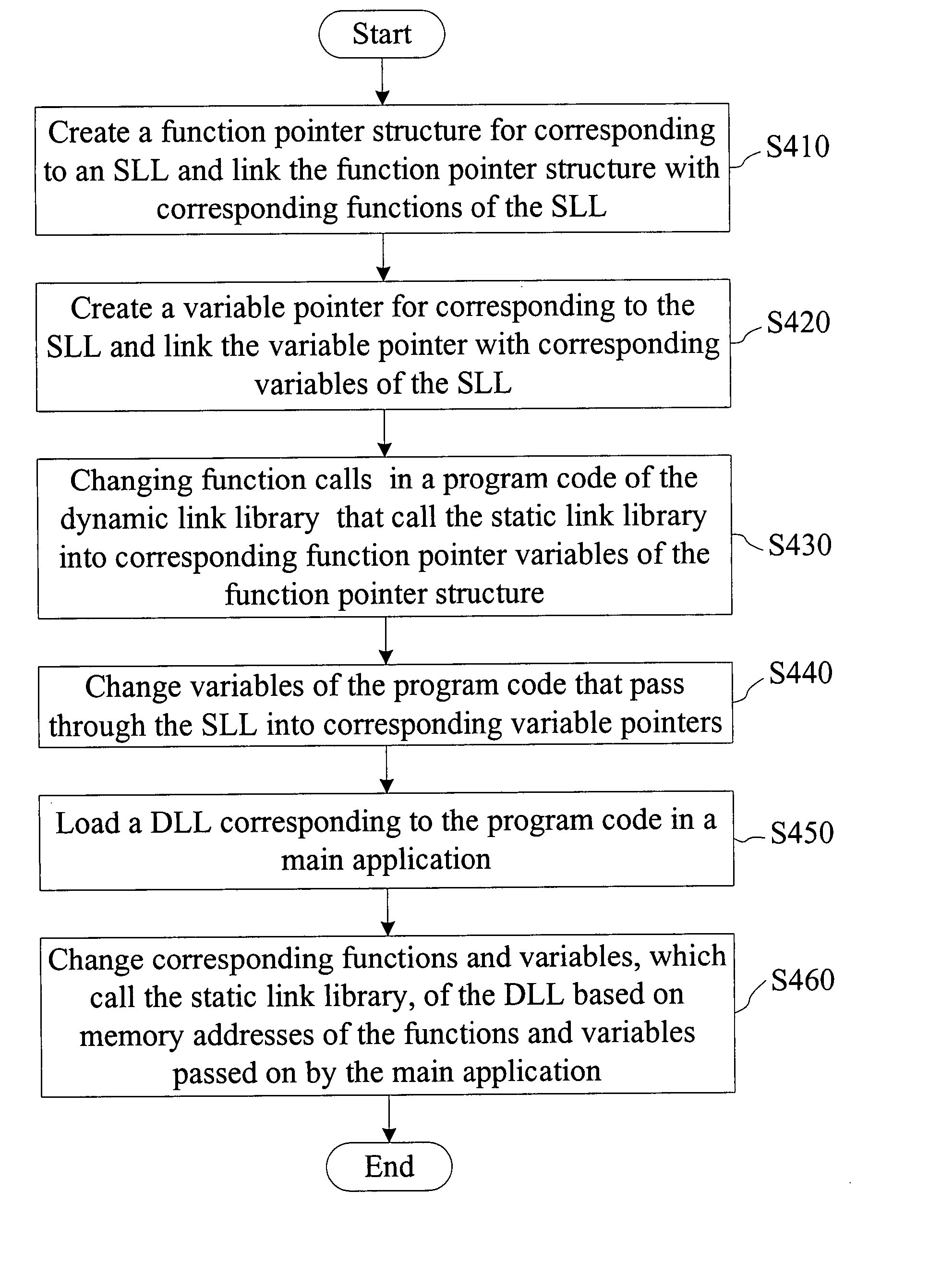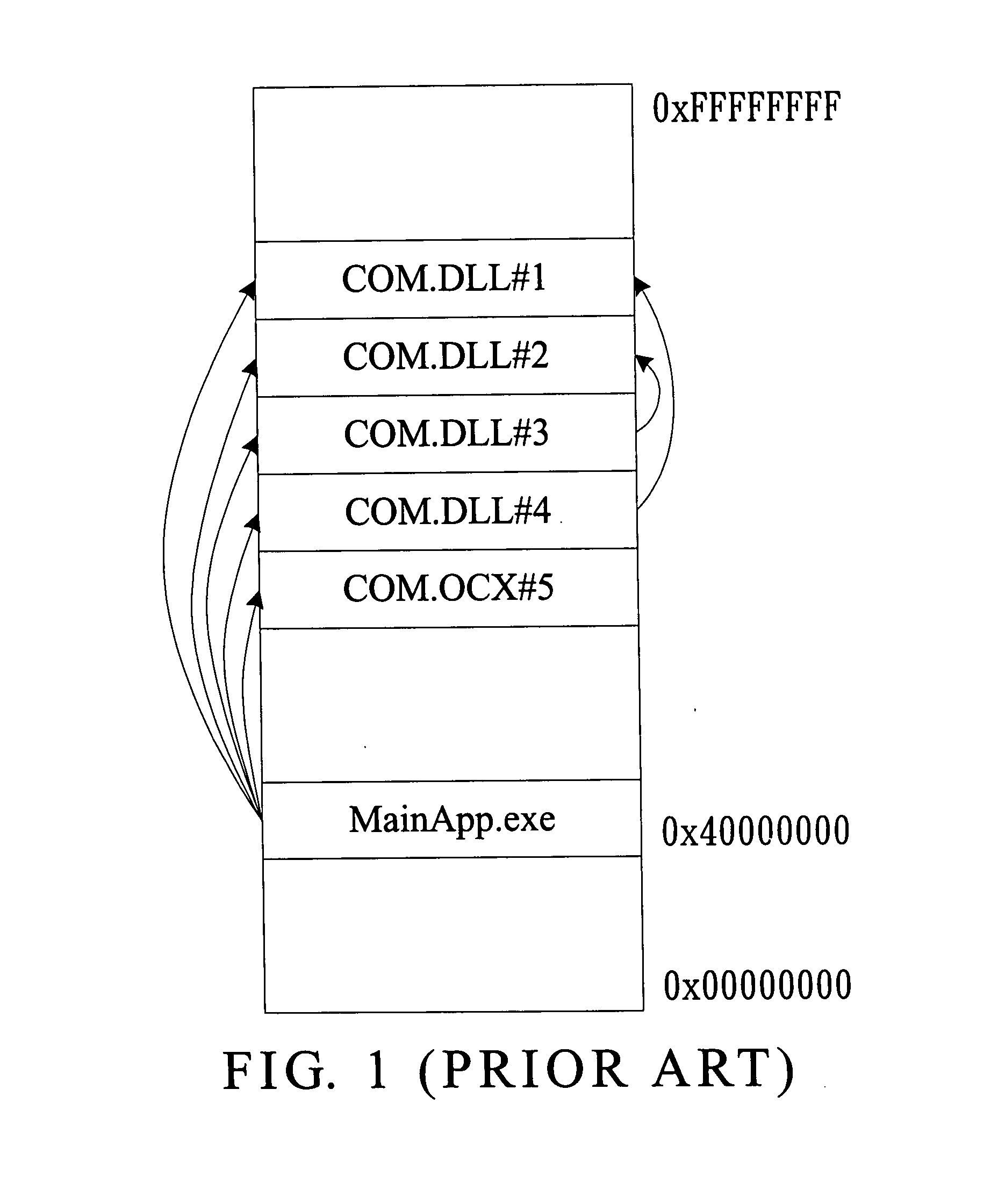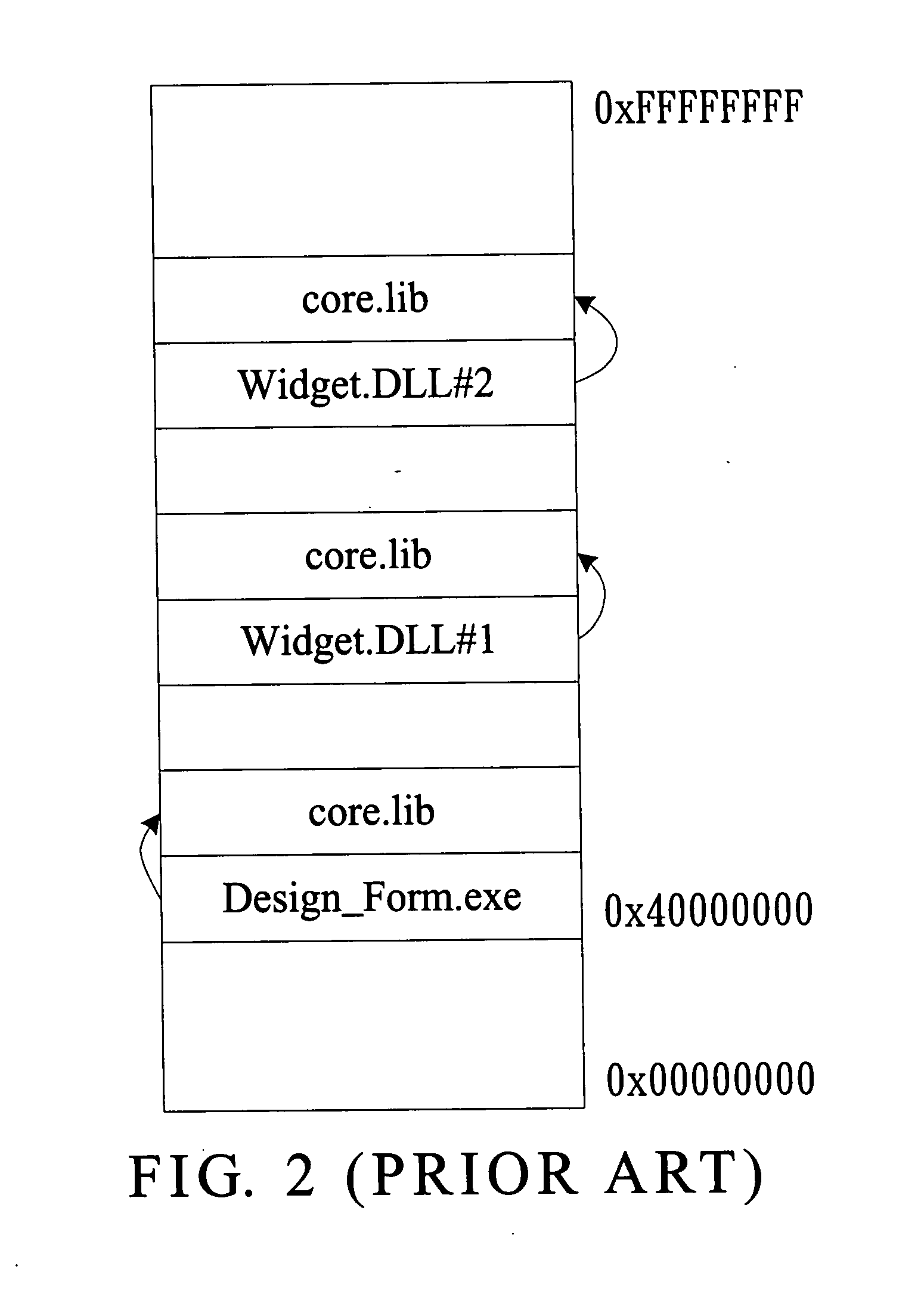Method for sharing static link code by software components in DLL and main program
a software component and static link technology, applied in link editing, program control, instruments, etc., can solve the problems of not being able to use software components to realize, visual software component designers to put in higher efforts, and it is not easy for clients using visual software components to self-design new components. to achieve the effect of reducing the memory requirement and the complexity of component design
- Summary
- Abstract
- Description
- Claims
- Application Information
AI Technical Summary
Benefits of technology
Problems solved by technology
Method used
Image
Examples
Embodiment Construction
[0023] In this embodiment, the method is described by, for example, a main program Design_Form.exe and two dynamic link libraries (DLLs) Widget.DLL#1 and Widget.DLL#2, where the program Design_Form.exe loads a core library Core.lib, and the DLLs Widget.DLL#1 and Widget.DLL#2 share the core library Core.lib using corresponding function pointers and global variable pointers. Thus, the memory use is reduced, and the dynamic linking is obtained.
[0024] In this embodiment, the method provides a solution for core libraries in a static linking environment. Namely, the bottom of the dynamic components and the main program containing the dynamic components provide a basic function call via the static link library. Upon the method, the same program code can be compiled into a DLL and a static link library (SLL) respectively and thus has the same presentation in the execution and design phases.
[0025]FIG. 4 is a flowchart of a method for sharing static link codes by DLL software components and...
PUM
 Login to View More
Login to View More Abstract
Description
Claims
Application Information
 Login to View More
Login to View More - R&D
- Intellectual Property
- Life Sciences
- Materials
- Tech Scout
- Unparalleled Data Quality
- Higher Quality Content
- 60% Fewer Hallucinations
Browse by: Latest US Patents, China's latest patents, Technical Efficacy Thesaurus, Application Domain, Technology Topic, Popular Technical Reports.
© 2025 PatSnap. All rights reserved.Legal|Privacy policy|Modern Slavery Act Transparency Statement|Sitemap|About US| Contact US: help@patsnap.com



